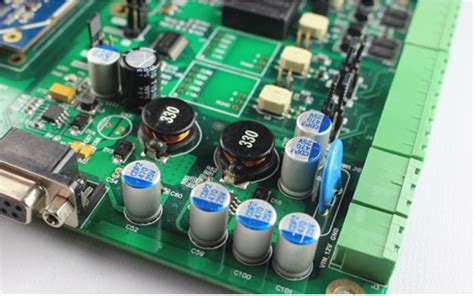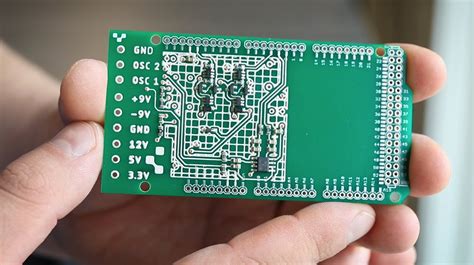Ceramic pcb material properties
Thermal Conductivity Of Ceramic PCB Materials
Ceramic printed circuit boards (PCBs) have gained significant attention in recent years due to their superior thermal management capabilities, which are crucial for high-performance electronic applications.
The thermal conductivity of ceramic PCB materials is a key property that distinguishes them from traditional PCB materials, such as FR-4, and plays a pivotal role in their performance and reliability. Understanding the thermal conductivity of these materials is essential for engineers and designers who aim to optimize the thermal performance of electronic devices.
Ceramic materials, such as aluminum oxide (Al2O3), aluminum nitride (AlN), and beryllium oxide (BeO), are commonly used in the fabrication of ceramic PCBs.
These materials are renowned for their excellent thermal conductivity, which allows for efficient heat dissipation from electronic components. For instance, aluminum nitride exhibits a thermal conductivity of approximately 170-230 W/mK, which is significantly higher than that of traditional FR-4 materials, which typically range from 0.3 to 0.4 W/mK. This substantial difference underscores the advantage of using ceramic materials in applications where heat management is critical.
The high thermal conductivity of ceramic materials can be attributed to their crystalline structure, which facilitates the rapid transfer of heat through lattice vibrations.
This property is particularly beneficial in high-power applications, such as power electronics and LED lighting, where excessive heat generation can lead to performance degradation and reduced lifespan of components. By efficiently dissipating heat, ceramic PCBs help maintain optimal operating temperatures, thereby enhancing the reliability and longevity of electronic devices.
Moreover, the thermal conductivity of ceramic PCB materials is not only beneficial for heat dissipation but also contributes to the overall mechanical stability of the board.
The inherent rigidity and strength of ceramic materials provide a robust substrate that can withstand thermal cycling and mechanical stress. This is particularly important in applications that experience frequent temperature fluctuations or are subject to harsh environmental conditions. The combination of high thermal conductivity and mechanical stability makes ceramic PCBs an ideal choice for demanding applications.
In addition to their thermal and mechanical properties, ceramic PCB materials offer excellent electrical insulation, which is crucial for preventing electrical interference and ensuring signal integrity.
This characteristic further enhances their suitability for high-frequency applications, where maintaining signal quality is paramount. The ability to combine high thermal conductivity with electrical insulation makes ceramic PCBs a versatile solution for a wide range of electronic applications.
Despite their numerous advantages, it is important to consider the cost implications of using ceramic PCB materials.
The manufacturing process for ceramic PCBs is generally more complex and expensive than that for traditional PCBs. However, the long-term benefits of improved thermal management and enhanced reliability often justify the initial investment, particularly in high-performance applications where failure is not an option.
In conclusion, the thermal conductivity of ceramic PCB materials is a defining characteristic that sets them apart from conventional PCB materials.
Their ability to efficiently dissipate heat, coupled with their mechanical stability and electrical insulation properties, makes them an attractive option for a variety of high-performance electronic applications. As technology continues to advance and the demand for reliable, high-power electronic devices grows, the role of ceramic PCBs in thermal management is likely to become increasingly important. Understanding the properties and benefits of these materials is essential for engineers and designers seeking to optimize the performance and reliability of their electronic systems.
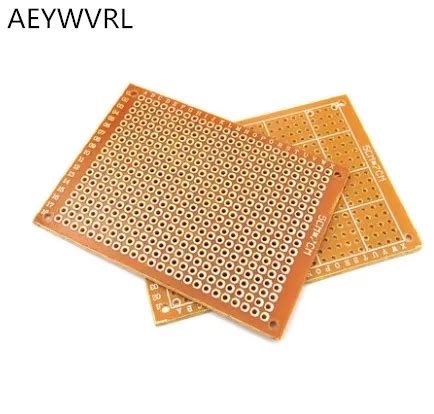
Dielectric Strength In Ceramic PCBs
Ceramic printed circuit boards (PCBs) have gained significant attention in recent years due to their superior performance characteristics compared to traditional materials like FR-4. One of the most critical properties that make ceramic PCBs stand out is their dielectric strength. Understanding the dielectric strength of ceramic materials is essential for engineers and designers who aim to optimize the performance and reliability of electronic devices.
Dielectric strength refers to the maximum electric field that a material can withstand without experiencing failure of its insulating properties.
In the context of ceramic PCBs, this property is crucial because it determines the board’s ability to handle high voltages without breaking down. Ceramic materials, such as alumina (Al2O3), aluminum nitride (AlN), and beryllium oxide (BeO), are known for their excellent dielectric properties, which make them ideal for high-frequency and high-power applications.
The inherent dielectric strength of ceramic materials is attributed to their dense and uniform microstructure.
This structure minimizes the presence of defects, such as pores and cracks, which can act as initiation points for electrical breakdown. Consequently, ceramic PCBs can maintain their insulating properties even under extreme conditions, providing a reliable platform for electronic components. Moreover, the high dielectric strength of ceramics allows for the design of compact circuits with closer spacing between conductive traces, thereby enabling miniaturization of electronic devices without compromising performance.
In addition to their impressive dielectric strength, ceramic materials offer other advantageous properties that complement their use in PCBs.
For instance, ceramics exhibit excellent thermal conductivity, which is essential for dissipating heat generated by electronic components. This property is particularly beneficial in high-power applications where efficient heat management is critical to prevent overheating and ensure the longevity of the device. Furthermore, ceramics are inherently resistant to chemical corrosion and mechanical wear, enhancing the durability and lifespan of the PCBs.
While the benefits of ceramic PCBs are clear, it is important to consider the challenges associated with their use.
The manufacturing process for ceramic PCBs is more complex and costly compared to traditional materials. This complexity arises from the need for specialized equipment and techniques to handle the brittle nature of ceramics. However, advancements in manufacturing technologies are gradually reducing these barriers, making ceramic PCBs more accessible for a wider range of applications.
In conclusion, the dielectric strength of ceramic PCBs is a defining characteristic that sets them apart from other materials.
This property, combined with their thermal conductivity, chemical resistance, and mechanical durability, makes ceramics an attractive choice for high-performance electronic applications. As technology continues to evolve, the demand for reliable and efficient electronic components will drive further innovation in ceramic PCB materials and manufacturing processes. By understanding and leveraging the unique properties of ceramics, engineers can design cutting-edge devices that meet the ever-increasing demands of modern technology.
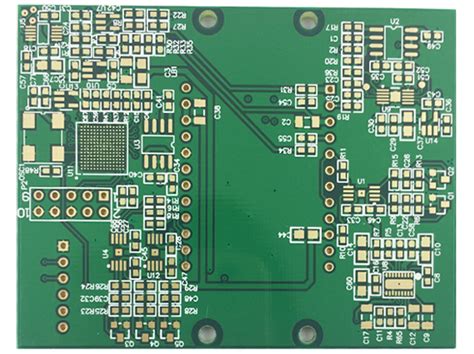
Mechanical Durability Of Ceramic Substrates
Ceramic substrates have become increasingly prominent in the field of electronics, particularly due to their exceptional mechanical durability. This durability is a critical factor in the performance and longevity of electronic components, especially in demanding environments. To understand the mechanical durability of ceramic substrates, it is essential to explore the intrinsic properties of ceramic materials that contribute to their robustness.
One of the primary attributes of ceramic substrates is their high hardness.
This characteristic is a result of the strong ionic and covalent bonds present in ceramic materials, which provide significant resistance to deformation and wear. Consequently, ceramic substrates are less susceptible to scratches and abrasions compared to other materials, such as polymers or metals. This resistance to surface damage ensures that the substrates maintain their structural integrity over extended periods, even under harsh conditions.
In addition to hardness, ceramic substrates exhibit excellent thermal stability.
This property is particularly important in electronic applications where components are often subjected to high temperatures. Ceramics can withstand these temperatures without undergoing significant changes in their mechanical properties, unlike many metals and polymers that may soften or degrade. The ability to maintain mechanical strength at elevated temperatures makes ceramic substrates ideal for use in high-power and high-frequency applications, where thermal management is crucial.
Moreover, ceramic substrates possess a low coefficient of thermal expansion.
This means that they experience minimal dimensional changes when exposed to temperature fluctuations. The low thermal expansion reduces the risk of mechanical stress and potential failure due to thermal cycling, which is a common challenge in electronic devices. By minimizing thermal-induced stress, ceramic substrates enhance the reliability and lifespan of electronic components.
Another noteworthy aspect of ceramic substrates is their high fracture toughness.
While ceramics are generally known for their brittleness, advances in material engineering have led to the development of ceramic substrates with improved fracture toughness. This enhancement is achieved through the incorporation of specific microstructural features, such as grain size control and the addition of reinforcing phases.
As a result, modern ceramic substrates can better resist crack propagation, thereby increasing their mechanical durability.
Furthermore, ceramic substrates are inherently resistant to chemical corrosion.
This resistance is attributed to the stable chemical structure of ceramics, which does not react easily with environmental agents. In applications where electronic components are exposed to corrosive substances, such as in automotive or aerospace industries, the chemical inertness of ceramic substrates provides an additional layer of protection. This property ensures that the mechanical durability of the substrates is not compromised by chemical degradation over time.
In conclusion, the mechanical durability of ceramic substrates is a product of their unique material properties, including high hardness, thermal stability, low thermal expansion, enhanced fracture toughness, and chemical resistance.
These attributes collectively contribute to the robustness and reliability of ceramic substrates in electronic applications. As technology continues to advance, the demand for durable and reliable materials will only increase, solidifying the role of ceramic substrates as a cornerstone in the development of next-generation electronic devices. Through ongoing research and innovation, the mechanical properties of ceramic substrates are likely to be further optimized, paving the way for even more resilient electronic components in the future.
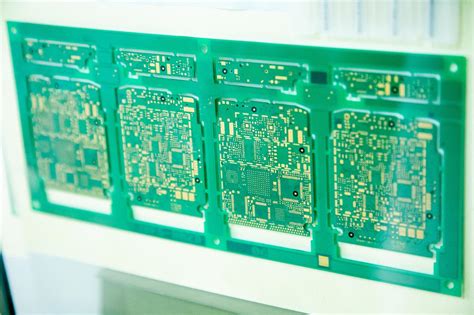
Chemical Resistance Of Ceramic PCB Materials
Ceramic printed circuit boards (PCBs) have gained significant attention in recent years due to their exceptional material properties, particularly their chemical resistance. This characteristic is crucial in various applications where exposure to harsh chemicals is inevitable. Understanding the chemical resistance of ceramic PCB materials involves examining their composition and the inherent properties that contribute to their durability in challenging environments.
Ceramic PCBs are primarily composed of materials such as alumina (Al2O3), aluminum nitride (AlN), and beryllium oxide (BeO).
These materials are known for their robust chemical stability, which is a key factor in their resistance to corrosive substances. Alumina, for instance, is highly resistant to acids and alkalis, making it an ideal choice for applications where chemical exposure is a concern. Similarly, aluminum nitride offers excellent resistance to a wide range of chemicals, including strong acids and bases, due to its stable chemical structure. Beryllium oxide, although less commonly used due to its toxicity, also provides superior chemical resistance, particularly in high-temperature environments.
The chemical resistance of ceramic PCB materials is further enhanced by their dense and non-porous nature.
This structural characteristic prevents the penetration of chemicals, thereby reducing the risk of degradation over time. In contrast to traditional PCB materials like FR-4, which can absorb moisture and chemicals, ceramic PCBs maintain their integrity even when exposed to aggressive chemical agents. This makes them particularly suitable for use in industries such as aerospace, automotive, and medical devices, where reliability and longevity are paramount.
Moreover, the thermal stability of ceramic materials contributes to their chemical resistance.
High thermal conductivity and low thermal expansion coefficients ensure that ceramic PCBs can withstand extreme temperatures without undergoing significant structural changes. This thermal resilience is crucial in environments where both high temperatures and chemical exposure occur simultaneously, as it prevents the breakdown of the material and maintains the functionality of the PCB.
In addition to their inherent material properties, the manufacturing processes used for ceramic PCBs also play a role in enhancing their chemical resistance.
Techniques such as thick-film and thin-film deposition allow for the creation of protective coatings that further shield the PCB from chemical attack. These coatings can be tailored to specific applications, providing an additional layer of defense against corrosive substances.
Furthermore, the versatility of ceramic materials allows for the integration of various components and circuits directly onto the substrate, reducing the need for additional protective measures.
This integration not only simplifies the design but also minimizes potential points of failure where chemicals could penetrate and cause damage.
In conclusion, the chemical resistance of ceramic PCB materials is a result of their unique composition, structural properties, and advanced manufacturing techniques. Their ability to withstand harsh chemical environments without compromising performance makes them an invaluable asset in numerous high-stakes applications. As technology continues to advance, the demand for reliable and durable materials like ceramic PCBs is expected to grow, further highlighting the importance of understanding and leveraging their chemical resistance properties.
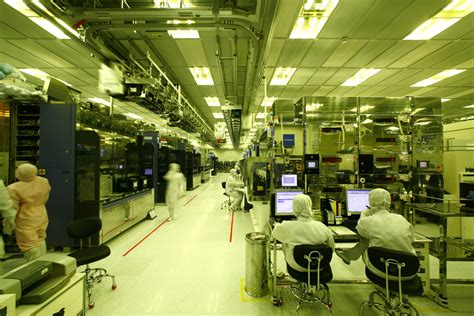
Electrical Insulation Properties Of Ceramic PCBs
Ceramic printed circuit boards (PCBs) have gained significant attention in the electronics industry due to their superior electrical insulation properties. These properties are crucial for the performance and reliability of electronic devices, especially in applications that demand high thermal and electrical stability. To understand the electrical insulation properties of ceramic PCBs, it is essential to explore the intrinsic characteristics of the ceramic materials used in their construction.
Ceramic materials, such as alumina (Al2O3), aluminum nitride (AlN), and beryllium oxide (BeO), are commonly used in the fabrication of ceramic PCBs.
These materials are known for their excellent dielectric properties, which contribute to their ability to insulate electrical currents effectively. The dielectric strength of ceramic materials is a key factor in their insulation capabilities. Dielectric strength refers to the maximum electric field that a material can withstand without experiencing breakdown. Ceramic materials typically exhibit high dielectric strength, making them ideal for applications where high voltage insulation is required.
Moreover, the low dielectric constant of ceramic materials is another attribute that enhances their electrical insulation properties.
The dielectric constant is a measure of a material’s ability to store electrical energy in an electric field. A lower dielectric constant indicates that the material is less likely to store energy, thereby reducing the risk of energy loss and improving the efficiency of the electronic device. This property is particularly beneficial in high-frequency applications, where minimizing energy loss is critical.
In addition to their dielectric properties, ceramic materials offer excellent thermal conductivity, which indirectly supports their electrical insulation capabilities.
High thermal conductivity ensures efficient heat dissipation, preventing overheating and maintaining the integrity of the insulation. This is particularly important in high-power applications, where excessive heat can compromise the performance and safety of the electronic device. By effectively managing heat, ceramic PCBs help maintain stable electrical insulation over a wide range of operating conditions.
Furthermore, ceramic PCBs exhibit remarkable resistance to environmental factors such as moisture, chemicals, and temperature fluctuations.
This resistance is crucial for maintaining electrical insulation in harsh environments. Moisture, for instance, can significantly degrade the insulation properties of conventional PCB materials, leading to potential short circuits and device failure. However, the inherent resistance of ceramic materials to moisture absorption ensures that the electrical insulation remains intact even in humid conditions.
The mechanical strength and stability of ceramic materials also contribute to their superior electrical insulation properties.
Unlike traditional PCB materials, ceramics are less prone to mechanical deformation, which can compromise insulation. This stability ensures that the electrical pathways remain intact, providing consistent insulation performance throughout the lifespan of the device.
In conclusion, the electrical insulation properties of ceramic PCBs are a result of the unique combination of high dielectric strength, low dielectric constant, excellent thermal conductivity, and resistance to environmental factors inherent in ceramic materials.
These properties make ceramic PCBs an ideal choice for applications that require reliable and efficient electrical insulation, particularly in high-power and high-frequency environments. As the demand for advanced electronic devices continues to grow, the role of ceramic PCBs in providing robust electrical insulation is likely to become increasingly significant, driving further innovation and development in this field.



